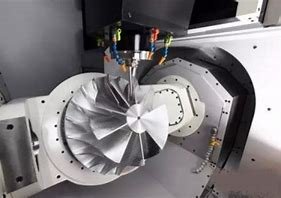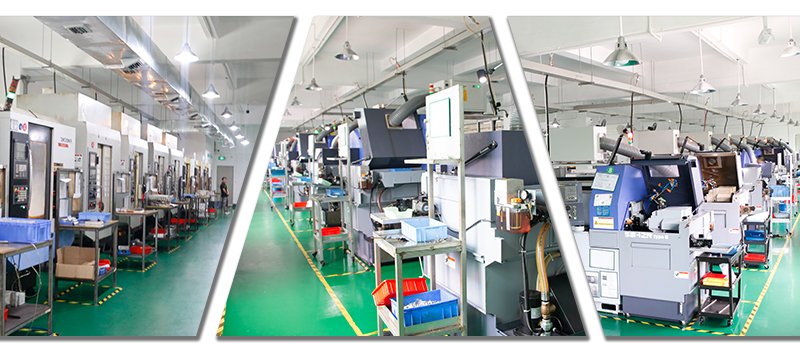As someone deeply involved in the world of CNC machining, I’ve seen firsthand how transformative it can be for manufacturing. But for those new to the industry, it might seem a bit overwhelming. If you’re here because you want to understand CNC machining from scratch, you’re in the right place! In this article, I’ll walk you through everything you need to know about CNC machining, from the very basics to how it works, its applications, and how it can help solve common manufacturing challenges.
So, what exactly is CNC machining, and why should you care about it? Let’s dive in and explore the essential aspects of this game-changing technology.
Understanding CNC Machining: The Basics
CNC stands for Computer Numerical Control, which, when broken down, refers to a process where computer software controls the movement and operation of machinery to shape, cut, and manipulate materials into the desired shape. It’s an automated way of controlling manufacturing machines, such as mills, lathes, and routers, using pre-programmed computer code rather than manual controls.
You might wonder: why is it so important? The core benefit of CNC machining is precision. Unlike traditional machining methods, CNC allows for incredibly accurate and repeatable production, which is crucial for industries where high-quality components are essential, such as aerospace, automotive, medical, and electronics.
A Brief History of CNC Machining
Before CNC, manual machines were the go-to for manufacturing parts. Operators would manually adjust tools, gauges, and other equipment, which not only took more time but also introduced more opportunities for human error. The rise of CNC machines revolutionized the industry by automating these processes, improving both efficiency and accuracy.
The technology was first developed in the 1940s, but it wasn’t until the 1960s that it became widely used in manufacturing. Over the years, as computing power increased and the software improved, CNC machining evolved into one of the most critical elements of modern production lines.
How Does CNC Machining Work?
At its core, CNC machining involves using a computer to control machinery through a series of coded instructions. Let’s break down the process:
Step 1: Design and CAD Modeling
The first step in the CNC machining process is designing the part you want to produce. This is typically done through Computer-Aided Design (CAD) software. In CAD, the part is drawn digitally in 2D or 3D, with all of the details, dimensions, and specifications clearly outlined. The design is then converted into a machine-readable format, typically using a program like G-code, which translates the digital design into specific commands for the CNC machine.
Step 2: Tool Path Creation
After the part design is created, the next step is to define the tool paths. These paths dictate how the CNC machine’s cutting tools will move during the machining process. Tool paths are generated through Computer-Aided Manufacturing (CAM) software, which takes into account factors such as cutting speed, depth of cut, material type, and the geometry of the tool and part.
Step 3: The Machining Process
Once the tool paths are ready, the CNC machine follows the programmed instructions to cut, drill, mill, or shape the material. CNC machines can operate using a wide range of tools, including drills, lathes, grinders, and mills. These machines work by moving along multiple axes—usually three, but some machines have up to five axes for more complex operations.
During the machining process, the cutting tools interact with the material, removing material bit by bit until the final shape is achieved. Since the process is automated, it offers highly precise control over the dimensions and features of the part.
Step 4: Finishing and Inspection
After the machining is complete, the part may go through various finishing processes, such as deburring, polishing, or anodizing. These processes help improve the part’s appearance and functionality. The part is then inspected for accuracy using quality control techniques like 3D scanning or coordinate measuring machines (CMMs) to ensure it meets the design specifications.
Key Components of CNC Machining
Understanding CNC machining requires knowing its essential components. Here are the major elements involved:
CNC Machine
The CNC machine itself is the hardware that performs the actual cutting, drilling, or milling of the material. These machines vary in size and complexity but typically consist of a bed (the base), a spindle (which holds the cutting tool), and a series of motors that control movement along multiple axes.
Control Panel
The control panel is where the operator interacts with the machine, entering commands, starting the machining process, and adjusting settings. In modern CNC machines, the control panel often features a touch screen, making the process more intuitive and user-friendly.
Cutting Tools
CNC machines use a wide range of cutting tools depending on the material and the desired finish. These tools include drills, end mills, lathes, and more. The cutting tool is mounted on the spindle, and the machine’s movement is precisely controlled to achieve the desired cut.
Software
CNC machining relies on sophisticated software to create the designs and control the machines. CAD software allows for the design of the parts, while CAM software generates the tool paths for machining. The final code is typically written in G-code, a language that the CNC machine can understand and execute.
Benefits of CNC Machining
Now that we understand the basics of CNC machining, let’s explore some of the major benefits that make it so popular in manufacturing:
1. Precision and Accuracy
CNC machines offer extreme precision, allowing manufacturers to produce parts with tolerances as tight as a few microns. This level of accuracy ensures that components fit together perfectly, which is especially important in industries like aerospace and medical devices.
2. Consistency and Repeatability
Once the CNC program is set up, the machine can run the same program repeatedly, producing identical parts with minimal variation. This repeatability makes CNC machining ideal for mass production of parts.
3. Efficiency and Speed
CNC machining is highly automated, which means it can produce parts much faster than manual machining. Additionally, the automation reduces the need for human intervention, minimizing errors and increasing efficiency.
4. Complexity and Versatility
CNC machines can produce incredibly complex geometries and shapes that would be difficult or impossible to achieve using manual methods. Whether you’re machining simple shapes or intricate designs with multiple angles and contours, CNC machining is up to the task.
5. Reduced Waste
Because CNC machining is precise, there’s less material waste during the manufacturing process. The machine cuts exactly what is needed, reducing the amount of scrap material and improving material utilization.
Common Applications of CNC Machining
CNC machining has applications across a wide range of industries. Here are some common areas where CNC machining is used:
1. Aerospace
In the aerospace industry, precision is critical. CNC machining allows manufacturers to create complex parts with extremely tight tolerances, such as turbine blades, engine components, and structural elements of aircraft.
2. Automotive
The automotive industry uses CNC machining to produce everything from engine blocks to body panels. CNC machines can create the intricate shapes required for modern automotive design and ensure that parts meet stringent performance standards.
3. Medical Devices
Medical device manufacturers rely on CNC machining for parts such as surgical tools, implants, and diagnostic equipment. The high precision of CNC machines ensures that these critical components meet the necessary safety and performance standards.
4. Electronics
CNC machining is used in the production of components for consumer electronics, such as housings for smartphones, computer parts, and connectors. The versatility and precision of CNC machining help create parts with complex geometries and tight tolerances.
5. Industrial Equipment
From gears and pulleys to custom machine parts, CNC machining is widely used to manufacture industrial equipment and machinery. It ensures that parts are durable and fit together perfectly to ensure optimal operation.
Challenges of CNC Machining
While CNC machining offers many advantages, it’s not without its challenges. Here are a few common issues that can arise:
1. Tool Wear
Over time, cutting tools can wear down, reducing the machine’s performance and the quality of the parts produced. Regular maintenance and tool replacement are required to keep the machines running at peak efficiency.
2. Material Challenges
Different materials behave differently during the machining process. For example, harder materials like titanium or stainless steel require special cutting tools and techniques. CNC machinists need to be familiar with the specific characteristics of each material they work with.
3. Machine Setup and Calibration
Setting up and calibrating a CNC machine can be time-consuming and requires a high level of expertise. Ensuring the machine is properly calibrated is crucial for achieving the desired results.
4. Cost
CNC machining can be expensive, especially for small-scale runs. The upfront cost of the machines and the software required can be substantial, though these costs are often offset by the speed, precision, and efficiency they bring to production.
Conclusion: Embracing CNC Machining for Precision and Efficiency
CNC machining is a transformative technology that has revolutionized the manufacturing industry. By offering unparalleled precision, repeatability, and the ability to produce complex geometries, CNC machining is the backbone of modern production lines. Whether you’re looking to produce a small batch of parts or scale up to mass production, understanding CNC machining will give you a significant advantage in today’s competitive manufacturing landscape.
Do you have any experience with CNC machining or any questions about how it works? I’d love to hear your thoughts or help you dive deeper into specific aspects of CNC machining. Feel free to leave a comment below or reach out—I’m always happy to share more insights!







